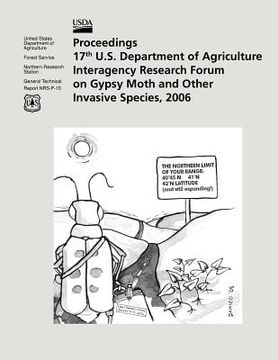Compartir
Proceedings 17th U.S. Department of Agriculture Interagency Research Forum on Gypsy Moth and Other Invasive Species, 2006 (en Inglés)
U. S. Department of Agriculture
(Autor)
·
Createspace Independent Publishing Platform
· Tapa Blanda
Proceedings 17th U.S. Department of Agriculture Interagency Research Forum on Gypsy Moth and Other Invasive Species, 2006 (en Inglés) - U. S. Department of Agriculture
$ 23.830
$ 43.330
Ahorras: $ 19.500
Elige la lista en la que quieres agregar tu producto o crea una nueva lista
✓ Producto agregado correctamente a la lista de deseos.
Ir a Mis Listas
Origen: Estados Unidos
(Costos de importación incluídos en el precio)
Se enviará desde nuestra bodega entre el
Viernes 26 de Julio y el
Miércoles 07 de Agosto.
Lo recibirás en cualquier lugar de Chile entre 1 y 3 días hábiles luego del envío.
Reseña del libro "Proceedings 17th U.S. Department of Agriculture Interagency Research Forum on Gypsy Moth and Other Invasive Species, 2006 (en Inglés)"
Japanese oak wilt (JOW) has been known since the 1930s, but in the last 15 years epidemics have intensifi ed and spread to the island's western coastal areas. The symbiotic ambrosia fungus Raffaelea quercivora is the causal agent of oak dieback, and is vectored by Platypus quercivorus (Murayama). This is the fi rst example of an ambrosia beetle fungus that kills vigorous trees. Mortality of Quercus crispula Blume was approximately 40 percent but much lower for associated species of Fagaceae, even though each species had a similar number of beetle attacks. It is likely that other oaks resistant to the fungus evolved under a stable relationship between the tree, fungus and beetle during a long evolutionary process. Quercus crispula was probably not part of this coevolution. This hypothesis was supported by the fact that P. quercivorus showed the least preference for Q. crispula, yet exhibited highest reproductive success in this species. On contrary, on the other oaks the index was almost one that guarantees a stable population dynamics for P. quercivorus.
- 0% (0)
- 0% (0)
- 0% (0)
- 0% (0)
- 0% (0)
Todos los libros de nuestro catálogo son Originales.
El libro está escrito en Inglés.
La encuadernación de esta edición es Tapa Blanda.
✓ Producto agregado correctamente al carro, Ir a Pagar.

